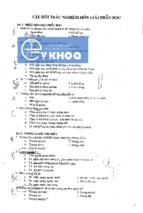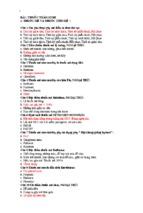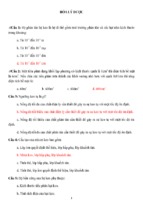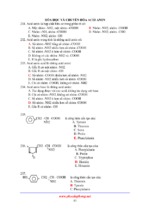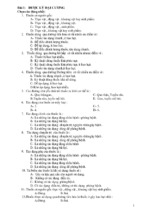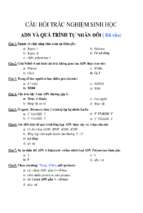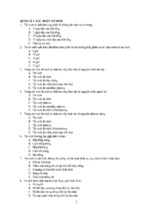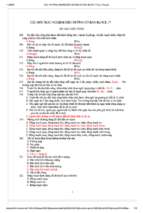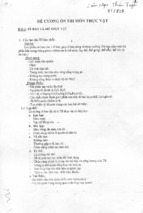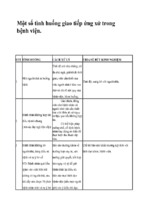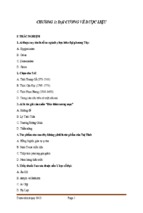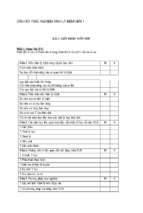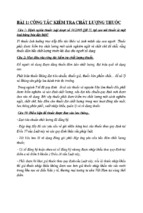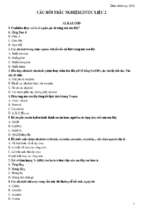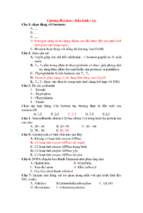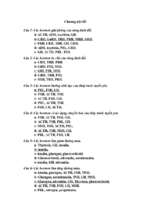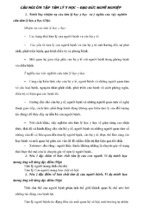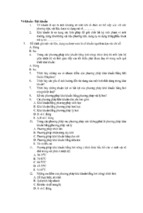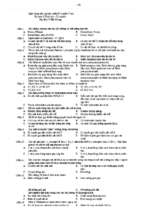The
A to Z
of
Anatomical Histological
and Medical terms
Dr A. L. Neill
BSc MSc MBBS PhD FACBS
[email protected]
prednisolone sodium phosphate
Tried & trusted brands from
clarithromycin
C
(ergot
prednisolone sodium phosphate
cephal
clomipramine HCI
cephalexin monohydrate
Dex
C
Ga
C
P
C
LPV
Pan
Dex
Flopen
P
Ga
Moxacin
Pa
imipramine H
pergolide mesylate
imipramine HCI
Pizotifen malate
(ergotam
clomipramine HCI
(
(phenoxymethylpenicillin potassiun)
Pizotifen malate
cephalexin monohydrate
alate
imipramine HCI
(flucloxacillindium)
(predn
(amoxycillin trihydrate)
cephalexin monohydrate
pergolide mesylate
VANCOCIN
LPV
clarithromycin
(phenoxymethylpenicillin potassiun)
pergolide mesylate
imipramine HCI
Pana
The
A to Z
of
Anatomical Histological
and Medical terms
Dr A. L. Neill
BSc MSc MBBS PhD FACBS
[email protected]
The A to Z of Anatomical Histological and Medical terms
Introduction
The following is a glossary of anatomical and histological (microscopic
anatomy) terms: their etymology – derivation where relavent, their
word roots, prefixes, suffixes and their pronunciation. Other
common medical terminology used in health studies are also included.
Many of these terms will appear again and again in medical/health
related subjects.
Why such an array of vocabularly in this living document? Because of
reader feedback!! This is a living document and it has been expanded
with suggestions from students and colleagues alike. Already it is
much changed from its first printing, due to this feedback. Initially it
was only a glossary of anatomical terms, then as I took my students
through Anatomy and onto Histology, they told me these terms too
were also foreign to them in many cases and also caused them
difficulty hence some common histological and cytological terms (by
no means complete) were added. Later a commonality of terms were
noted by the students who asked for an inclusion of their word roots
and regular repeated prefixes and suffixes; derivations so they could
build up and analyse the ANATOMY of the medical words themselves.
Hence a section of common prefixes, suffixes and word roots was
added to the beginning of the book with some included in the main
text in blue with a pronunciation guide.
With the presentation of student seminas in anatomy and histology, it
became obvious that some guide on how to pronounce many these
terms for the new and the non-medical student was needed and so
a pronunciation guide and common explanation of some terms
were also included in red.
As you can see any contribution is greatly valued and can only make
this and other A to Z publications more helpful for the reader, so
please send any suggestions to me directly or via Aspenpharmacare
who have graciously sponsored much of A to Z projects.
Dr Amanda Neill BSc MSc MBBs PhD FACBS
Director of Anatomy
Anatomy @ Mac
fax 93651000
mobile 0414248747
or email
[email protected]
www.amandasatoz.com
1
© A. L. Neill
The A to Z of Anatomical Histological and Medical terms
Acknowledgement and Future Plans
This is the second update of the A to Z books now numbering 5,
including: the A to Z of Skeletal muscles, the A to Z of the Bones
of the Skull, the A to Z of Bones, Joints and Ligaments, the A to Z
of Peripheral Nerves and this book the A to Z of Anatomical
Histological and Medical terms. Please see the back of the book for
ordering details and the availability of the other titles in the series. The
A to Z of Histological and anatomical images is still present on the
website although yet to be turned into an A to Z book., and the further
suggestions of books such as the A to Z of Surface Anatomy, the A
to Z of Gynecological terms, The A to Z of Radiology, The A to Z of
Organs and Systems and the A to Z of Emergency Medicine, the
A to Z of the skin and the A to Z of Neurology and the Nervous
system are also being discussed. As always we value your input and
response as to the order and the need for this works. A feedback form
at the back of the book is designed to collate any suggestions or ideas
you may have. You are always welcome to visit our website and leave
your suggestions there. Students, doctors and others, it is hoped you
will use these guides and find them helpful in your studies, practice or
other aspects of your healthy life.
Dedication
I thank Aspenpharmacare for their ongoing support, in particular the
Australian CEO Greg Lan. My family Ali, Zoe, Quentin, Jody and
Mickey are my raison d’etre,although I may not always show them
how much their support means to me.
Changes to the second edition
Changes to this volume are as follows: inclusion of additional
acronyms used in medical and other related health areas, particularly
in reference to students and including common abbreviations used on
most medical wards and in emergency medicine; inclusion of some
common Histological/Immunohistochemical stains and their uses;
additional medical facts and tables and basic anatomical concepts and
descriptions; guides to degrees diplomas and postnominals and other
qualifications and an inclusion of some helpful medical memonics.
© A. L. Neill
2
The A to Z of Anatomical Histological and Medical terms
Anatomical, Medical and Clinical Abbreviations
and Acronyms in common use
A
AA
= amino acids / androgenic
alopecia
AAA = abdominal aortic aneurysm
AAD = antibiotic-associated diarrhoea
AAO = alert, awake, and orientated
A&O = alert & orientated
Ab
= antibody
ABD/Abd = abdomen
ABG = arterial blood gas
AC
= before eating
ACD = acute contact dermatitis
ACLS = advanced cardiac life support
ACTH = adrenocorticotropic hormone
ad libitum/ad lib = take as needed / no
restrictions
ADD = attention deficit disorder
ADH = anti-diuretic hormone
ADHD = attention deficit hyperactivity
disorder
adj.
= adjective
ADR = adverse drug reaction / acute
dystonic reaction
AED = antiepileptic drug
AF
= atrial fibrillation / afebrile
AFB = acid-fast bacilli
AFP = alpha-fetoprotein
AFX = atypical fibroxanthoma
A /G = albumin/globulin ratio
Ag
= antigen
AI
= aortic insufficiency
AK
= actinic keratosis
AKA = above the knee amputation
ALD = alcoholic liver disease
ALL = acute lymphocytic leukaemia
alt.
= alternative
Amb = ambulate
AML = acute myelogenous leukaemia
ANA = antinuclear antibody
ANS = autonomic nervous system
AOB = alcohol on breath
AODM = adult onset diabetes mellitus
AP
= anteroposterior or abdominal perineal
ARDS = acute respiratory distress
syndrome
3
ARF
AS
AS
ASAP
ASCVD
ASD
ASHD
AST
AV
A-V
A-VO2
= acute renal failure
= aortic stenosis
= Alternative spelling, generally
referring to the differences b/n
British and American spelling
= as soon as possible
= atherosclerotic cardiovascular
disease
= atrial septal defect
= atherosclerotic heart disease
= anal skin tag
= atrioventricular
= arteriovenous
= arteriovenous oxygen
B
b/n
BBB
= between
bundle branch block /blood brain
barrier
BCAA = branched chain amino acids
BCC = basal cell carcinoma
bd/bid = twice a day
BD
= Bowen’s disease / twice daily
BE
= barium enema
BEE = basal energy expenditure
BF
= blood flow
BKA = below the knee amputation
BLK = benign lichenoid keratosis /
benign lymphocytic keratosis
BL
= basal lamina
BM
= bone marrow /bowel
movement/basement membrane
BMR = basal metabolic rate
BOM = bilateral otitis media
BP
= blood pressure / bullous
pemphigoid
BPH = benign prostatic hypertrophy
BPM = beats per minute
BRBPR = bright red blood per rectum
BRP = bathroom privileges
BS
= bowel sounds / breath sounds /
blood stream
BUN = blood urea nitrogen
BV
= blood vessels
BW
= body weight
Bx
= biopsy
© A. L. Neill
The A to Z of Anatomical Histological and Medical terms
C
c
= with
c.f.
= as demonstrated / that means
C&S = culture and sensitivity
CA
= cancer/carcinoma
Ca
= calcium /carcinoma
CAA = crystalline amino acids
CABG = coronary artery bypass graft
CAD = coronary artery disease
CAT (scan) = computerized axial tomography
CBC = complete blood count
CBG = capillary blood gas
CC
= chief complaint
CCF = chronic cardiac failure
CCU = cardiac care unit
CCV = critical closing volume
CF
= cystic fibrosis
CGL = chronic granulocytic leukaemia
CHF = congestive heart failure
CHO = carbohydrate
chol. = cholesterol
CI
= cardiac index
CIN
= carcinoma in situ
CK
= creatinine kinase
CML = chronic myelogenous leukaemia
CMV = cytomegalovirus
CN
= cranial nerves / compound
naevus
CNH = chondrodermatits nodularis
helicis
CNS = central nervous system
CO
= cardiac output
C/O = complaining of
COAD = chronic obstructive airways
disease
coag. = coagulation
COLD = chronic obstructive lung disease
COPD = chronic obstructive pulmonary
disease
CONN = congenital naevus
CP
= chest pain/cerebral palsy
CPAP = continuous positive airway
pressure
CPDN = compound naevus
CPK = creatinine phosphokinase
CPR = cardiopulmonary resuscitation
CRCL = creatinine clearance
CRF = chronic renal failure
CRP = C-reactive protein
CSF = Cerebrospinal fluid
CSSD = chronic superficial scaling
© A. L. Neill
dermatitis
= connective tissue / computerized
tomography
CTCL = cutaneous T cell lymphoma
cut.
= cutaneous
CUT HORN = cutaneous horn
CVA = cerebrovascular accident
/costovertebral angle
CVAT = tenderness at the costovertebral
angle
CVP = central venous pressure
CX
= cicatrix
CXR/CX= chest X-ray
CT
D
DA
DAT
DAW
DC
D&C
DDx
DF
DFSP
=
=
=
=
=
=
=
=
D5W
DI
DIC
=
=
=
DIF
DIP
DH
DJD
DKA
dL/dl
DM
DMS
DN
DNR
DNS
=
=
=
=
=
=
=
=
=
=
=
DOA
DOE
DPL
DPT
Ds
DSAP
=
=
=
=
=
=
DTR
DVT
DX
Dysp
=
=
=
=
dermatitis artifacta
diet as tolerated
dispense as written
discontinue /discharge
dilation and curettage
differential diagnosis
dermatofibroma
dermatofibrosarcoma
protuberans
5% dextrose in water
diabetes insipidus
disseminated intravascular
coagulopathy
direct immunofluorescence
distal interphalangeal joint
dermatitis herpetiformis
degenerative joint disease
diabetic ketoacidosis
decilitre
diabetes mellitus
dermatomyositis
dermal naevus
do not resuscitate
did not survive processing (e.g.
tissue sample)
dead on arrival
dyspnea on exertion
diagnostic peritoneal lavage
diphtheria, pertussis, tetanus
disease
disseminated superficial actinic
porokeratosis
deep tendon reflexes
deep venous thrombosis
diagnosis
dysplastic
4
The A to Z of Anatomical Histological and Medical terms
E
EAA
EAC
EBA
EBL
EC
ECG
ECT
EED
EEG
EFAD
e.g.
EMG
EMS
EMV
=
=
=
=
=
=
=
=
=
=
=
=
=
=
ENT
EOM
ESR
ET
ETT
ERCP
=
=
=
=
=
=
ETOH =
EUA =
F
FB
FBS
FDE
FEV
FFP
FFFT
FRC
FTT
FU
FUO
FVC
Fx
G
GA
GC
GD
GETT
GFR
GH
GI
GIT
Gk.
g/gm
5
essential amino acids
erythema annular centrificum
epidermolysis bullosa acquisita
estimated blood loss
extracellular (outside the cell)
electrocardiogram
electroconvulsive therapy
erythema elevatum diutinum
electroencephalogram
essential fatty acid deficiency
example
electromyogram
erythema multiforma
eyes, motor, verbal response
(Glasgow coma scale)
ears, nose, and throat
extraocular muscles
erythrocyte sedimentation rate
endotracheal
endotracheal tube
endoscopic retrograde
cholangio-pancreatography
ethanol
examination under anaesthesia
=
=
=
=
=
=
=
=
=
=
=
=
foreign body
fasting blood sugar
fixed drug eruption
forced expiratory volume
fresh frozen plasma
fits, faints and/or funny turns
functional residual capacity
failure to thrive
follow-up
fever of unknown origin
forced vital capacity
fracture
=
=
=
=
=
=
=
=
=
=
granuloma annulare
Gonorrhoea
Grover’s disease
general by endotracheal tube
glomerular filtration rate
growth hormone
gastrointestinal
gastrointestinal tract
Greek
gram
gr
= grain; 1 grain = 65mg.
Therefore Vgr = 325mg
GSW = gun shot wound
Gt/gtt = drops
GTT = glucose tolerance test
GU
= genitourinary
GVDH = graft versus host disease
GXT = graded exercise tolerance test
(Stress test)
H
H
=
HA
=
HAA =
HAV =
Hb
=
HBP =
HCG =
HCT =
HDL =
HEENT =
Hg
=
Hgb =
H/H
=
HIV
=
HK
=
HLA =
HMF =
HJR =
HO
=
HOB =
HP
=
HPF =
HPV =
HPI
=
HR
=
HS
=
HSM =
HSP =
HTLV-III =
HSV
HTN
Hx
I
I&D
I&O
IBR
IC
ICD
hormone
headache
hepatitis B surface antigen
hepatitis A virus
haemoglobin
high blood pressure
human chorionic gonadotropin
hematocrit
high density lipoprotein
head, eyes, ears, nose and throat
haemorrage
haemoglobin
haemoglobin/haematocrit
human immunodeficiency virus
solar keratosis
histocompatibility locus antigen
Hutchinson’s melanotic freckle
hepatojugular reflex
history of
head of bed
high power
high power field
human papilloma virus
history of present illness
heart rate
at bedtime
hepatosplenomegaly
herpes simplex virus
human lymphotropic virus, type
III (AIDS agent, HIV)
= herpes simplex virus
= hypertension
= history
=
=
=
=
=
incision and drainage
intake and output
insect bite reaction
intracellular (inside the cell)
irritant contact dermatitis
© A. L. Neill
The A to Z of Anatomical Histological and Medical terms
ICS
ICU
ID
IDDM
=
=
=
=
IEC
IG/Ig
IHSS
=
=
=
IM/im
IMV
INF
IPPB
=
=
=
=
IRBBB =
IRDM =
IT
ITP
=
=
IV/iv
IVC
=
=
IVP
=
intercostal space
intensive care unit
infectious disease/identification
insulin dependent diabetes
mellitus
intradermal carcinoma
immunoglobulin
idiopathic hypertrophic subaortic
stenosis
intramuscular
intermittent mandatory ventilation
intravenous nutritional fluid
intermittent positive pressure
breathing
incomplete right bundle branch
block
insulin resistant diabetes
mellitus
intrathecal
idiopathic thrombocytopenic
purpura
intravenous
intravenous
cholangiogram/inferior vena cava
intravenous pyelogram
J
JN
= junctional naevus
JODM = juvenile onset diabetes mellitus
JVD = jugular venous distention
K
KA
KOR
KP
KUB
KVO
=
=
=
=
=
keratocanthoma
keep open rate
keratous pilaris
kidneys, ureters, bladder
keep vein open
L
L
LAD
= left
= left axis deviation/left anterior
descending
LAE = left atrial enlargement
LAHB = left anterior hemi-block
LAP = left atrial pressure or leukocyte
alkaline phosphatase
LBBB = left bundle branch block
LDH = lactate dehydrogenase
LE
= lupus erythematosus
LIH
= left inguinal hernia
LK
= lichinoid keratosis
© A. L. Neill
LLL
LMM
LMP
LNMP
LOC
LP
Lt.
M
M
MAO
MAP
MAST
MBT
MCH
MCHC
=
=
=
=
=
left lower lobe
lentigo maligna (melanoma)
last menstrual period
last normal menstrual period
loss of consciousness/level of
consciousness
= lumbar puncture / lichen planus
= Latin
=
=
=
=
=
=
=
MCTD =
MCV =
MI
=
mL/ml
MLE
MM
MMEF
Mmol
MMR
MRI
MRSA
MS
=
=
=
=
=
=
=
=
=
MSSA
MVA
MVI
MVV
=
=
=
=
margin (generally of the skin)
monoamine oxidase
mean arterial pressure
medical anti-shock trousers
maternal blood type
mean cell haemoglobin
mean cell haemoglobin
concentration
mixed connective tissue disease
mean cell volume
myocardial infarction/mitral
insufficiency
millilitre
midline episiotomy
malignanat melanoma
maximal mid expiratory flow
millimole
measles, mumps, rubella
magnetic resonance imaging
methicillin resistant staph aureus
multiple sclerosis/mitral
stenosis/morphine sulphate
methicillin-sensitive staph aureus
motor vehicle accident
multivitamin injection
maximum voluntary ventilation
N
NAD
= no active disease/ no
abnormality detected
NAS = no added salt
NCV = nerve conduction velocity
NED = no evidence of recurrent disease
Ng
= nanogram
NG
= nasogastric
NIDDM = non-insulin dependent diabetes
mellitus
NKA = no known allergies
NKDA = no known drug allergies
NMR = nuclear magnetic resonance
nocte = at night
6
The A to Z of Anatomical Histological and Medical terms
NPO = nothing by mouth /nil by mouth
NRM = no regular medications
NSAID = non-steroidal anti- inflammatory
drugs
NS
= nervous system
NSR = normal sinus rhythm
NT
= nervous tissue / nasotracheal
O
OB
= obstetrics
OCG = oral cholecystogram
OD
= overdose / right eye
OE / O/E = on examination
OM
= otitis media
OOB = out of bed
OP
= out patients - hospital patients
treated but not admitted
OPV = oral polio vaccine
OR
= operating room
OS
= left eye
OU
= both eyes
P
P
PA
PAC
PAO2
PaO2
PAP
PAS
PAT
P&PD
Pb
PC
PCWP
=
=
=
=
=
=
=
=
=
=
=
=
PD
PDA
PDR
PDx
PE
=
=
=
=
=
PEEP
PFT
Pg/pg
PHx
PI
=
=
=
=
=
PKU
pl.
PMH
=
=
=
7
para
posteroanterior
premature atrial contraction
alveolar oxygen
peripheral arterial oxygen content
pulmonary artery pressure
periodic acid Schiff’s stain
paroxysymal atrial tachycardia
percussion and postural drainage
prothrombin time / lead
after eating
pulmonary capillary wedge
pressure
pathological diagnosis
patent ductus arteriosus
physicians desk reference
provisional diagnosis
pulmonary embolus /physical
exam / pleural effusion
positive end expiratory pressure
pulmonary function tests
pictogram
past history
pulmonic insufficeny disease /
pulmonary index
phenylketonuria
plural
previous medical history
PMI
PMN
= point of maximal impulse
= polymorphonuclear leukocyte
(neutrophil, polymorph)
PN
= peripheral nerve
PND = paroxysmal nocturnal dyspnea
PNS = peripheral nervous system
PPD = pigmented purpuric dermatosis
PR
= petechial rash
prn
= given as required no set
treatment regime
PS
= pulmonic stenosis
PT
= prothrombin time, or physical
therapy
Pt
= patient
PTCA = percutaneous transluminal
coronary angioplasty
PTH = parathyroid hormone
PTHC = percutanous transhepatic
cholangiogram
PTT = partial thromboplastin time
PUD = peptic ulcer disease
PUPP = puritic urticarial papules and
plaques of pregnancy
PVC = premature ventricular contraction
PVD = peripheral vascular disease
Q
q
qd
qh
= every (e.g. q6h = every 6 hours)
= every day
= every hour q4h, q6h.... every 4
hours, every 6 hours etc.
qid
= four times a day
QNS = quantity not sufficient
Qod = every other day
Qs/Qt = shunt fraction
Qt
= total cardiac output
R
R
RA
RAD
RAE
RAP
RBBB
RBC
RBP
RBS
RBT
RDA
RDW
RIA
=
=
=
=
=
=
=
=
=
=
=
=
=
right
rheumatoid arthritis or right atrium
right atrial axis deviation
right atrial enlargement
right atrial pressure
right bundle branch block
red blood cell
retinol-binding protein
random blood sugar
random breath test
recommended daily allowance
red cell distribution width
radioimmunoassay
© A. L. Neill
The A to Z of Anatomical Histological and Medical terms
RIH
RLL
RLQ
RML
RNA
R/O
ROM
ROS
RPG
RRR
RT
=
=
=
=
=
=
=
=
=
=
=
RTA
RTC
RU
RUG
RUL
RUQ
RV
RVH
Rx
=
=
=
=
=
=
=
=
=
S
s
SA
SAA
S&E
SBE
SBFT
SBS
SC
sc
SCC
SCr
SEB K
SEM
SG
SGA
SGGT
=
=
=
=
=
=
=
=
=
=
=
=
=
=
=
=
right inguinal hernia
right lower lobe
right lower quadrant
right middle lobe
ribonucleic acid
rule out
range of motion
review of systems
retrograde pyelogram
regular rate and rhythm
respiratory therapy / radiation
therapy
renal tubular acidosis
return to clinic
resin uptake
retrograde urethogram
right upper lobe
right upper quadrant
residual volume
right ventricular hyperthrophy
treatment / regime
without
sinoatrial
synthetic amino acid
sugar and acetone
subacute bacterial endocarditis
small bowel follow through
short bowel syndrome
spinal cord / subcutaneously
subcutaneously
squamous cell carcinoma
serum creatinine
seborraeic keratosis
systolic ejection murmur
Swan-Ganz (catheter)
small for gestational age
serum gamma- glutamyl
transpeptidase
SGOT = serum glutamic- oxaloacetic
transaminase
SGPT = serum glutamic- pyruvic
transaminase
SIADH = syndrome of inappropriate
antidiuretic hormone
Sig
= write on label
SIMV = synchronous intermittent
mandatory ventilation
sing. = singular
SK
= solar keratosis
sl
= sublingual
© A. L. Neill
SLE
SMO
SN
SO
SOAP
=
=
=
=
=
SOB
SQ
ss
=
=
=
SSM =
SSMM =
STAT
STD
sup.
supf.
SVD
Sx
T
T&C
TAH
T&H
TB
TBG
Td
tds
TIA
TIBC
Tid/td
TIG
TKO
TLC
TMJ
TNTC
TO
TOPV
TPN
TSH
TT
TTP
TU
TUR
TURBT
TURP
TV
TVH
Tw
Tx
=
=
=
=
=
=
systemic lupus erythematous
slips made out
spinal nerve
standing orders
Subjective, Objective,
Assessment, Plan
shortness of breath
subcutaneous
one-half /same side /signs and
symptoms
superficial spreading melanoma
superficial spreading malignant
melanoma
immediately
sexually transmitted disease
superior
superficial
spontaneous vaginal delivery
symptoms
= type and cross
= total abdominal hysterectomy
= type and hold (blood or serum
products)
= tuberculosis
= total binding globulin
= tetanus-diphtheria toxoid
= three times daily
= transient ischemic attack
= total iron binding capacity
= three times a day
= tetanus immune globulin
= to keep open
= total lung capacity
= temporo-mandibular joint
= too numerous to count
= telephone order
= trivalent oral polio vaccine
= total parenteral nutrition
= thyroid stimulating hormone
= thrombin time
= thrombotic thrombocytopenic
purpura
= tuberculin units / transurethral
= transurethral resection
= TUR bladder tumors
= transurethral resection of prostate
= tidal volume
= total vaginal hysterectomy
= twice a week
= treatment, transplant
8
The A to Z of Anatomical Histological and Medical terms
U
UA
UAC
UAO
UBD
UC
Ud
UFH
UGI
URI
URQ
URTI
US
UTI
UUN
UVA
WO
=
=
=
=
=
=
=
=
=
=
=
=
=
=
=
urinalysis
uric acid /umbilical artery catheter
upper airway obstruction
universal blood donor
ulcerative colitis /umbilical cord
as directed
unfractionated heparin
upper gastrointestinal
upper respiratory infection
upper right quadrant
upper respiratory tract infection
ultrasound
urinary tract infection
urinary urea nitrogen
ultraviolet A light
VA
VAD
VC
VCT
VCUG
VDRL
=
=
=
=
=
=
VMA
VO
V/Q
VRE
=
=
=
=
VSS
VT
VV
VW
VWD
VZV
=
=
=
=
=
=
verrica / verrucous
venous access device
vital capacity
venous clotting time
voiding cysourethrogram
Venereal Disease Research
Laboratory (test for syphilis)
vanillymadelic acid
verbal order / voice order
ventilation - perfusion
vancomycin-resistant
enterococcus
vital signs stable
ventricular tachycardia
varicose veins
vessel wall
von Willebrand's disease
varicella zoster virus
V
W
WB
WBC
WBR
WD
WF
WIA
WID
WM
WN
w/n
w/o
WNL
9
= whole blood
= white blood cell / white blood
cell count
= whole body radiation
= well developed
= white female
= wounded in action
= widow, widower
= white male
= well nourished
= within
= without
= within normal limits
= written order /weeks old/ wide
open.
WOP = without pain
WOS = wedge of skin
W.P. = whirlpool
WPW = Wolff-Parkinson-White (syndrome)
W-T-D = wet to dry
W/U = workup
X
X2d
XI
XII
XL
XM
XMM
XOM
XRT
XS
XULN
Y
y
YF
YLC
yo
YOB
yr
ytd
Z
ZDV
ZE
Z-ESR
Zn
ZnO
ZSB
=
=
=
=
=
=
=
=
=
=
times 2 days.
eleven
twelve
extended release / extra large.
crossmatch
xeromammography
extraocular movements
X-ray therapy (radiation therapy)
excessive
times upper limit of normal
=
=
=
=
=
=
=
years / yes
yellow fever
youngest living child
years old
year of birth
year
year to date
=
=
=
=
=
=
zidovudine
Zollinger-Ellison (syndrome)
zeta erythrocyte sedimentation ate
zinc
zinc oxide
zero stools since birth
#
~
º
= fracture / number
= approximately
= no (e.g. FFFTº = no fits, faints or
funny turns)
1º
= primary
2º
= secondary
9/12 = nine months
3/52 = three weeks
5/7
= five days
2/24 = two hours
3/60 = three minutes
3/360 = three seconds
3s
= three seconds
© A. L. Neill
The A to Z of Anatomical Histological and Medical terms
Common Histological Stains and their uses
Histology stains are a confusion of eponymous terms and
methods used in individual laboratories. In many cases individual
variations exist in different laboratories and it is advised that
contact with the appropriate laboratory will give the medical
professional the details they need, concerning their particular
specialities and variations on these common stains. Those
included here are those stains common to most labs and the
principles behind the staining methods. There are many more and
this list is by no means complete, also one stain may be used for
many purposes eg the routine stain used in all labs. - H&E.
More details can be found in the A to Z of Histology /
Histopathology, and the A to Z of the Skin and surface anatomy.
See www.aspenatlas.com.
General Stains
Haematoxylin and Eosin (H&E)
This is an all round stain and used on nearly every section in the
histology laboratory. The haematoxylin stains the nucleic acids and
other acid material blue and the eosin acts as a counter stain to
colour most other structures non-specifically red/pink, allowing an
overall view of the cellular morphology. It generally not interfere with
other stains and can be used in conjunction with them, for example
with PAS.
PAS (periodic acid-Schiff)
This an all-around useful stain for many things. It stains glycogen,
mucin, mucoprotein, glycoprotein, as well as fungi. A predigestion
step with amylase will remove staining for glycogen. PAS is useful for
outlining tissue structures: basement membranes, capsules, blood
vessels, etc. It does stain a lot of things and, therefore, can have a
high background. It is very sensitive, but not very specific.
Structures stained
AFB (acid fast bacilli) stain for mycobacterium
This stain uses carbol-fuchsin to stain the lipid walls of acid fast
organisms such as M. tuberculosis. The most commonly used
method is the Ziehl-Neelsen method, though there is also Putt’s
stain, Kinyoun’s method a modification of which is the Fite-Faraco
stain and has a weaker acid for supposedly more delicate M. leprae
bacilli. Lipid is often removed in the processing, so this stain can be
© A. L. Neill
10
The A to Z of Anatomical Histological and Medical terms
insensitive particularly when looking in large granulomatous tissue.
The most sensitive stain for mycobacteria is the AuramineRhodamine stain which requires a fluorescence microscope for
viewing. There are things other than mycobacteria that are “acid
fast”. Included are cryptosporidium, isospora, and the hooklets of
cysticerci.
Amyloid
Amyloid is a substance which can be found in all tissues
pathologically. Although a fatty substance it is not fat but can be
stained using Congo red, or Lieb’s Crystal Violet method .
Biogenic Amine stains for Argentaffin cells
(Autofluorescence, Diazo, Fontana-Masson, modified Giemsa,
Schmorl’s Pascual’s and Weisel’s stains)
Cells that produce polypeptide hormones, active amines, or amine
precursors (adrenalin = epinephrine, noradrenalin = norepinephrine)
can be found individually (Kulchitsky cell of GI tract) or as a group
(adrenal medulla). The following is a traditional classification of the
staining patterns based upon the ability of the cells to turn soluble silver
nitrate to metallic silver - causing a black deposit in tissue sections.
Traditionally there are 3 patterns of staining although this is fairly
artificial, as they are interchangeable when the fixative is changed.
Chromaffin cells have cytoplasmic granules that appear brown
when fixed with a dichromate solution as in the adrenal medulla and
their tumours pheochromocytomas; Argentaffin cells reduce a silver
solution to metallic silver after formalin fixation, as in carcinoid
tumours of the gut. Using a pre-reduction step may cause a more
intense stain. This is called an argyrophil (silver loving) reaction.
Blood smear stains
Romanowsky stains eg Giemsa stains, Wright-Giemsa stains
All these stains contain mixtures of methylene blue, azure, and eosin
compounds. One property of methylene blue and toluidine blue dyes
is metachromasia. This means that a tissue component stains a
different colour than the dye itself. For example, mast cell granules,
cartilage, mucin, and amyloid will stain purple and not blue, which is
helpful in identifying these components, while using only the one
stain.
11
© A. L. Neill
The A to Z of Anatomical Histological and Medical terms
Calcium (Ca) Stains
Ca bound to an anion, such as phosphate (PO4) or CO3 (carbonate) can
be demonstrated with the Von Kossa stain. Ca forms a blue-black lake
with haematoxylin to give a blue colour on H&E stain, usually with
sharp edges. This stain is most useful when large amounts are
present, as in bone.
Alizarin red S forms an orange-red lake with Ca. It works best with
small amounts of Ca (such as in Michaelis-Gutman bodies). The
Alizarin method is also used in analyzers to measure serum calcium
photometrically.
Azan stain can be used to differentiate osteoid from mineralized bone.
Connective tissue stains (collagen, elastin, reticulin fibres
and fibrin)
The trichrome stain helps to highlight the supporting collagenous
stroma in sections from a variety of organs. This helps to determine
the pattern of tissue injury. Trichrome will also aid in identifying normal
structures, such as connective tissue capsules of organs, the
lamina propria of gastrointestinal tract, and the broncho-vascular
structures in lung. Sirius red stain is also used for collagen staining.
The reticulin stain is useful in parenchymal organs such as liver and
spleen to outline the architecture. Delicate reticular fibres, which are
argyrophilic, can be seen. A reticulin stain occasionally helps to
highlight the growth pattern of neoplasms, by showing the dispersal of
the normal fibrous architecture.
An elastic tissue stain such as the Verhoff’s van Giesen stain or
Orcein-Giemsa stain help to outline arteries, because the elastic
lamina of muscular arteries, and the media of the aorta, contain
elastic fibres, and if used with the Masson stain for collagen and
muscle fibres provides a good contrast.
Martius’s scarlet blue stain distinguishes fibrin from true connective
tissues and should be used where there is extensive inflammation.
Exogenous pigments and minerals (asbestos, carbon, silica)
Asbestos is a special type of long-thin silica crystal, usually of the
mineral group chrysotile. In tissue, these crystals are highly irritative
and highly fibrogenic. The fibres become coated with a protein-ironcalcium matrix, giving them a shish-kebab appearance. These are
called “ferruginous bodies” because they are highlighted with an iron
© A. L. Neill
12
The A to Z of Anatomical Histological and Medical terms
stain, such as Perl’s iron stain, or the Prussian blue reaction.
Carbon appears as anthracotic pigment in the lungs. It can be
distinguished from melanin by doing a Melanin bleach, which helps
to distinguish carbon from melanin. Poorly fixed tissues may contain
formalin-heme pigment, which is black and finely granular, but this is
widely scattered in the tissues without regard to cellular detail.
Formalin-heme pigment is also birefringent on polarization.
Silica is present in many minerals and building materials. Most
forms are very inert and cannot be stained in tissue but can be
demonstrated by white birefringence on polarization. It is most often
present in lung, but can make its way into lymph node.
Street drugs for injection often are diluted with compounds
containing minerals such as silica or talc. These crystals can be
found throughout the body, but especially in lymphoreticular tissues.
Tattoo pigment is usually black and is inert and non-polarizable.
Red tattoo pigment often contains cinnabar (which has mercury in
it). there are no specific stains for these materials, and in general,
minerals are best demonstrated by microincineration techniques or
by scanning electron microscopy with energy dispersive analysis
(SEM-EDA), which is also used in the analysis of gunshot residue,
because of its composition of antimony, barium, and lead.
Fat stains
The oil red O (ORO) stain can identify neutral lipids and fatty acids in
smears and tissues. Fresh smears or cryostat sections of tissue are
necessary because fixatives containing alcohols, or routine tissue
processing with clearing, will remove lipids. The ORO is a rapid and
simple stain. It can be useful in identifying fat emboli in lung tissue
or clot sections of peripheral blood.
Fungi stains
(Gomori methenamine silver stain = GMS)
Fungi and Pneumocystis carinii., have cell walls which stain black or
brown, outlining the organisms clearly. Disadvantages with this stain
is the large amount of background staining, so the morphology of the
organism needs to be known. Fungi also stains red with the PAS
method and blue with H&E.
Iron (haemosiderin) stains
Haemosiderin (storage iron granules) may be present in areas of old
haemorrhage or be deposited in tissues with iron overload
(haemosiderosis - physiological, haemochromatosis - pathological).
13
© A. L. Neill
The A to Z of Anatomical Histological and Medical terms
Perl’s iron stain is the classic method for demonstrating iron in
tissues. The section is treated with dilute hydrochloric acid to release
ferric ions from binding proteins. These ions then react with
potassium ferrocyanide to produce an insoluble blue compound (the
Prussian blue reaction).
Lipochrome (lipofuschin) pigments - Age spots
These are the breakdown products within cells from oxidation of
lipids and lipoproteins. They are the wear-and-tear pigments found
most commonly in heart, liver, CNS, and adrenal cortex (zona
reticularis). The less highly oxidized “ceroid” pigment of testis
interstitium and seminal vesicle is another form of lipochrome.
Lipochrome can be stained by Sudan black B, long Ziehl-Neelson
acid fast, and Schmorl’s methods. Lipochrome may also exhibit a
strong orange autofluorescence in formalin-fixed, unstained paraffin
sections.
Melanin stains
The Fontana-Masson stain, relies upon the melanin granules to
reduce silver nitrate (note, argentaffin, chromaffin, and some
lipochrome pigments also will stain black as well). Schmorl’s
method uses the reducing properties of melanin to stain granules
blue-green, but the most specific method is an enzyme
histochemical method, DOPA-oxidase. DOPA substrate is acted upon
by DOPA-oxidase in the melanin-producing cells to produce a
brownish black deposit.
Bleaching techniques remove melanin in order to get a good look at
cellular morphology. They make use of a strong oxidizing agent such
as potassium permanganate or hydrogen peroxide. Ocular melanin
takes hours to bleach, while skin melanin takes minutes.
Formaldehyde-induced fluorescence can be used to highlight
biogenic amines (chromaffin, argentaffin) and melanin in tissues.
Formalin fixation imparts a strong yellow autofluorescence to
unstained tissues with these substances.
Pseudomelanin of melanosis coli is PAS positive whereas true
melanin is not. Pseudomelanin pigment is also found in
macrophages.
Microorganisms - bacteria stains
Gram stain gram positive organisms stain purple and gram negative
organisms stain red poorly. In H&E all bacteria appear as blue rods or
cocci regardless of gram reaction. Colonies appear as fuzzy blue
© A. L. Neill
14
The A to Z of Anatomical Histological and Medical terms
clusters. Spirochetes are very difficult to stain. The best method is
the Warthin-Starry stain. A Giemsa stain may help demonstrate
Donovan bodies and leishmania.
Mucin stains
There are a variety of mucin stains, all attempting to demonstrate
one or more types of mucopolysaccharide substances in tissues. The
types of mucopolysaccharides are as follows:
• Neutral - glands of the GI tract and in prostate. They stain with
PAS.
• Acid (simple, or non-sulphated) - are in epithelial cells
containing sialic acid. They stain with PAS, Alcian blue,
colloidal iron method, and metachromatic dyes.
• Acid (simple, mesenchymal) found in tissue stroma and
sarcomas - These contain hyaluronic acid. They stain with
Alcian blue, colloidal iron, and metachromatic dyes.
• Acid (complex, or sulphated, epithelial) - These are found in
adenocarcinomas. PAS, Alcian blue, colloidal iron,
mucicarmine, and metachromatic stains are positive.
• Acid (complex, connective tissue) - found in tissue stroma,
cartilage, and bone and include substances such as
chondroitin sulphate or keratin sulphate. They stain with
Alcian blue.
There are a variety of stains for mucin:
•
•
•
•
Colloidal iron (“AMP”) - stain acid mucopolysaccharides.
Alcian blue - stains all mucins using a variety of methods
PAS (peroidic acid-Schiff) - stains glycogen as well as mucins
Mucicarmine - specifically stains epithelial mucins.
The mucin stain with the most specificity is mucicarmine, but it is
very insensitive. PAS is most sensitive but least specific Colloidal
iron stains are unpredictable. Alcian blue stains are simple, but have
a lot of background staining.
Urates
Uric acid crystals are seen in acid urine. In tissue, urates are present
as sodium urate. They are soluble in aqueous solutions and slightly
soluble in weak alcoholic solutions. Therefore, tissues must be fixed
in 95% or absolute alcohol to prevent leaching of urates.
Methenamine silver stains urates black. Sodium urate crystals are
also birefringent on polarization.
15
© A. L. Neill
The A to Z of Anatomical Histological and Medical terms
Common Exogenous materials found in tissues
substance
usual site
origin
aluminium
lungs skin
air / mining
asbestos
lungs
air / asbestos building
materials / mining
beryllium
lungs, skin
mining
carbon
lungs, skin
gas emissions Traffic,
smoking
fungal spores
lungs, skin, hair
mould, fungi, gardens
lead
kidney, bone, lungs,
mucosal linings
paint, mining
silica
lungs, skin
glass, fibroglass material
silver
nasal passages, respiratory
mucosa, skin
photography materials,
silver, mining
© A. L. Neill
16
The A to Z of Anatomical Histological and Medical terms
How to use the Pronunciation guide in
this glossary
Words are written in Bold with a (bracketed guide) listed afterwards in
English sounds - the syllables in CAPITALS are the syllables
emphasized in the pronunciation of the word.
Words with a guide are often listed twice the pronunciation guide is
first and the etymology or derivation of the word is then listed next
with further explanation if necessary.
Please note spelling is both English and American with cross
reference to each. With the inclusion of prefixes and suffixes where
necessary, their simple pronuciation guide is backeted after their
inclusion. It is not listed in the front guide.
Guide to Naming muscles
Most skeletal muscles are named based on one or more criteria
1 the direction of the muscle fibres eg rectus meaning straight
(running parallel to an anatomical line -Rectus Abdominus parallel to the abdominal midline) as opposed to oblique or
transverse.
2 location where the muscle os located generally the
associated bone eg Temporalis near the Temporal bone
3 size or series ie in a series of closely related muscles is it the
largest maximus or the smallest minimus (gluteus maximus,
gluteus minimus) or with only 2 the larger, major or the smaller
minor eg Pectoralis major and Pectoralis minor. Maybe it is the
longest, longus or the shortest, brevis or the first second or third
prima, secondo, tertius.
4 number of origins eg Biceps which has 2 origins as opposed to
Triceps which has 3.
5 insertion and/or origin where the muscle inserts and originates
eg Sternocleidomastoid giving in the name the insertion and the
origins of this muscle
6 action muscles are named for their actions in which case there
is frequently an opposing muscle named to demonstrate this
purpose: flexors - extensors / abductors - adductors / supinators
- pronators / depressors - elevators / tensors - rotators.
17
© A. L. Neill

